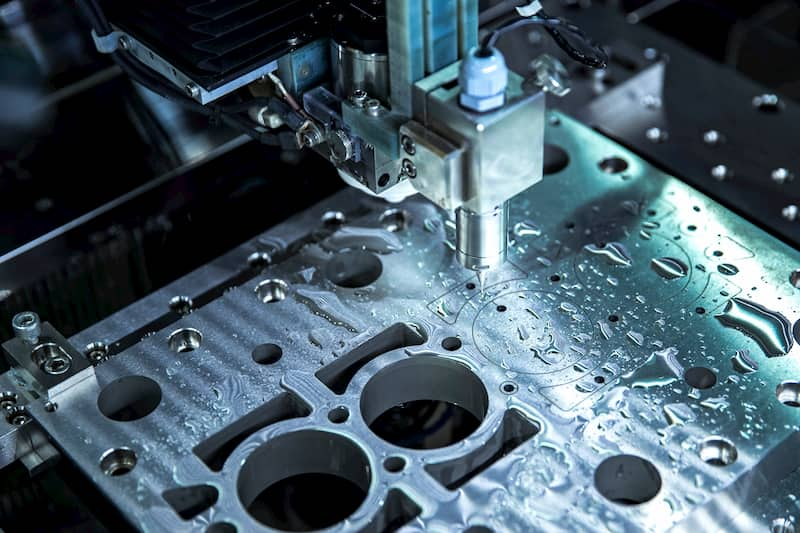Precision is a fundamental aspect of CNC machining, ensuring that manufactured parts meet exact specifications for fit, function, and durability. CNC machining tolerances define the allowable deviations in a part’s dimensions, impacting everything from product performance to manufacturing costs. Achieving the right balance between precision and cost efficiency is essential for industries like aerospace, automotive, medical, and electronics.
In this article, we’ll explore CNC machining tolerances, their types, influencing factors, and their impact on manufacturing. Many companies rely on suppliers to provide high-quality CNC machining solutions while maintaining cost-effective production. Whether producing large-scale components or engaging CNC prototype machining, understanding tolerances is key to optimizing manufacturing efficiency.
What Are CNC Machining Tolerances?
CNC machining tolerances specify the acceptable range of variation in a part’s dimensions. These tolerances ensure that components function correctly, fit together precisely, and maintain structural integrity. They are typically measured in inches (e.g., ±0.001 inches) or millimeters (e.g., ±0.02 mm), depending on the industry’s requirements.
Tighter tolerances require advanced machinery and quality control processes to ensure accuracy, making them more expensive. However, they are crucial for industries where even the smallest deviation can lead to significant performance issues.
Types of CNC Machining Tolerances
Different tolerance types apply depending on the application and required precision.
Dimensional Tolerances
These control the allowable variation in a part’s overall size. For example, a hole specified as 10.00 mm with a tolerance of ±0.02 mm means the hole can range from 9.98 mm to 10.02 mm while remaining acceptable.
Geometric Tolerances
These tolerances govern the shape, orientation, and position of features within a part. Examples include:
Flatness – Ensures a surface is even and free from excessive warping.
Parallelism – Ensures two surfaces remain consistently spaced apart.
Roundness – Ensures a cylindrical part maintains a uniform diameter.
Fit Tolerances
These define how two mating parts fit together, ensuring proper assembly. There are three main types:
Clearance Fit – Provides space for movement between parts.
Interference Fit – Ensures a tight, fixed connection between parts.
Transition Fit – Offers a balance between clearance and interference fits.
Factors That Influence CNC Machining Tolerances
Several factors affect the precision of CNC machining tolerances, including:
Material Selection
Different materials behave differently during machining. Softer metals like aluminum are easier to machine to tight tolerances, whereas harder metals like stainless steel or titanium require specialized cutting tools.
Machine Capabilities
Modern CNC machines equipped with high-speed spindles, multi-axis controls, and precision tool holders can achieve extremely tight tolerances. Outdated or lower-quality machines may struggle to maintain consistent accuracy.
Tool Wear and Cutting Techniques
As cutting tools wear down, they lose their ability to maintain precise dimensions. Regular tool replacement and maintenance help sustain accuracy in machining processes.
Thermal Expansion
Metals expand and contract due to temperature fluctuations, affecting their final dimensions. Controlling environmental conditions and applying cooling techniques can help mitigate these effects.
Inspection and Quality Control
Precision measuring tools like coordinate measuring machines (CMMs) and laser scanners are essential for verifying tolerances and ensuring high-quality production.
How Tolerances Impact Manufacturing Costs
Tighter tolerances require more precise machining, which increases costs. Here’s a breakdown of how tolerance levels impact production expenses:
| Tolerance Level | Cost Impact | Application |
| Standard Tolerance (±0.1 mm) | Low cost, fast production | General manufacturing |
| Medium Tolerance (±0.05 mm) | Moderate cost, requires higher precision | Automotive, electronics |
| Tight Tolerance (±0.01 mm) | Higher cost, slower production | Aerospace, medical devices |
| Ultra-Tight Tolerance (±0.005 mm or less) | Expensive, requires specialized equipment | High-end robotics, optical systems |
Manufacturers must find the right balance between required precision and cost-effectiveness.
Industries That Depend on Tight CNC Machining Tolerances
Aerospace
Aircraft components require extreme precision to ensure safety and performance. CNC machining is used to manufacture turbine blades, landing gear parts, and engine components with ultra-tight tolerances.
Automotive
High-precision machining is essential for producing engine components, transmission systems, and braking parts, ensuring smooth vehicle performance.
Medical Devices
From surgical instruments to prosthetic implants, CNC machining guarantees that medical devices meet strict regulatory standards.
Electronics
Miniaturized electronic components, such as circuit board enclosures and connectors, require precise tolerances to maintain proper functionality.
Industrial Equipment
CNC-machined parts for heavy machinery and industrial tools demand durability and precision to function under extreme conditions.
Best Practices for Achieving Optimal CNC Machining Tolerances
Define Tolerances Based on Functional Needs
Not all parts require ultra-tight tolerances. Identifying critical dimensions helps optimize costs while maintaining performance.
Partner with an Experienced CNC Machining Supplier
I have worked with a supplier headquartered in China provides access to high-quality CNC machining solutions at competitive pricing. Manufacturers with advanced technology and strict quality control can deliver consistent precision.
Optimize Machining Techniques
Using high-quality cutting tools, fine-tuned CNC programming, and optimized cutting speeds enhances accuracy and reduces machining errors.
Implement Rigorous Quality Control
Regular inspections using CMMs, micrometers, and laser measurement tools ensure that all parts meet specified tolerances before shipping.
Utilize Rapid Prototyping for Validation
Before mass production, fast and reliable CNC prototype machining helps identify design flaws and confirm that tolerances meet application requirements.
Conclusion
CNC machining tolerances are crucial in determining the accuracy, performance, and cost of manufactured parts. Understanding different tolerance types and the factors that influence precision allows manufacturers to optimize their production processes.
For businesses needing high-quality CNC machining solutions, balancing tight tolerances with production costs is key. Many companies choose a supplier headquartered in China to take advantage of cost-effective precision manufacturing. Additionally, leveraging fast and reliable CNC prototype machining ensures that designs are validated before full-scale production.
By following best practices and working with experienced machining providers, businesses can achieve the highest precision while maintaining efficiency in manufacturing.
Keep an eye for more news & updates on BangKokTribune!


